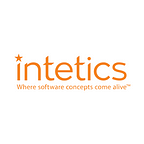The Mental Models Used by Top Product Owners
By Elena Moldavskaya,
Business Analysts, Intetics Inc.
Fools say that they learn by experience.
I prefer to profit by other’s experience.
― Otto von Bismarck
In Agile environments, the product owner is the key person that can make or break a project. This role is very demanding and requires a wide range of skills. Great product owners act as entrepreneurs, even if they are working in large companies. They take full responsibility for maximizing the value of the product, they make decisions about product features and design, and they choose how to invest money, effort, and time. All of this results in the prioritization of product backlog.
So, how does someone become a great product owner? It’s all about the mental attitude. In this post, we’re going to discuss the mental models that lead to great efficiency and success in Agile development.
Mental models
Mental models are simple expressions of complex processes based on past experiences. In every single project that I’ve worked on, I’ve noticed that product owners use at least one mental model. Let’s take a look at some of the most useful models.
Return on investment
Product owners need to consider how much return the company will receive back for every dollar and every minute invested in development. Each additional feature should maximize the overall customer experience.
Time to market
Time is the most valuable resource in any business process and every business wants to ship a product sooner rather than later. Features that can be developed faster should be prioritized higher. A good product owner knows exactly what to develop in the next sprint, next three months or next three years.
The Pareto Principle
This model is well-known and states that 80% of all results comes from 20% of efforts. In an Agile product development context, it would mean that 80% of the product value comes from 20% of product backlog items. Stellar product owners know exactly how to get this “magical 20%” in order to focus on the most vital tasks.
Speed vs. Quality
What is better…launching a new product or feature as quickly as possible or taking the time to deliver the highest quality? The answer depends on the specific needs of your customers. You may need to solve a problem immediately or get customer feedback, so speed wins out. Once you’ve gotten the feedback, you can take the time to deliver the highest quality product.
KPI
Using Key Performance Indicators to evaluate the success of your product is a good practice. However, you need to make sure that you are choosing the right indicators. For example, the success of the product may be based on the number of new users, so the team is happy when this indicator is rising. But what about the number of active users? If this number isn’t growing, then the original KPI really doesn’t mean anything.
Diminishing returns
If you focus on improving your product after launch, you should take into account that the customer value will be diminished for every unit of effort. After a while, it’s better to stop and concentrate on something new.
The consequences of a wrong mental model
I once took part in new product development that was based on money transfers between private individuals. The product owner was absolutely sure that this product would be very successful and would grow dramatically after market release. He used the mental model that the product team needed to develop 100% of features from the backlog for all possible sales channels (bank branches, online bank, mobile app) and perfect the product before launching. Several development teams spent a lot of time, money and effort to develop all the features in all channels.
The reality was that users didn’t like the product. More precisely, they only liked one of four major features and in one of three channels. If the product owner had used other mental models in this case, the team would have launched the product faster and gotten feedback earlier. That would help them develop the product more effectively while saving time and money.
So, the key to becoming a great product owner is to choose the right mental models that lead to the best practices for any given development project.
Featured Image by Freepik.com
Find more Intetics stories here
Thanks for reading The Marketing & Growth Hacking Publication
Join our Facebook Group. Contact us for a sponsored post. Write for us. Need help growing your business to the next level? We can be your CMO and marketing team. Learn more.
